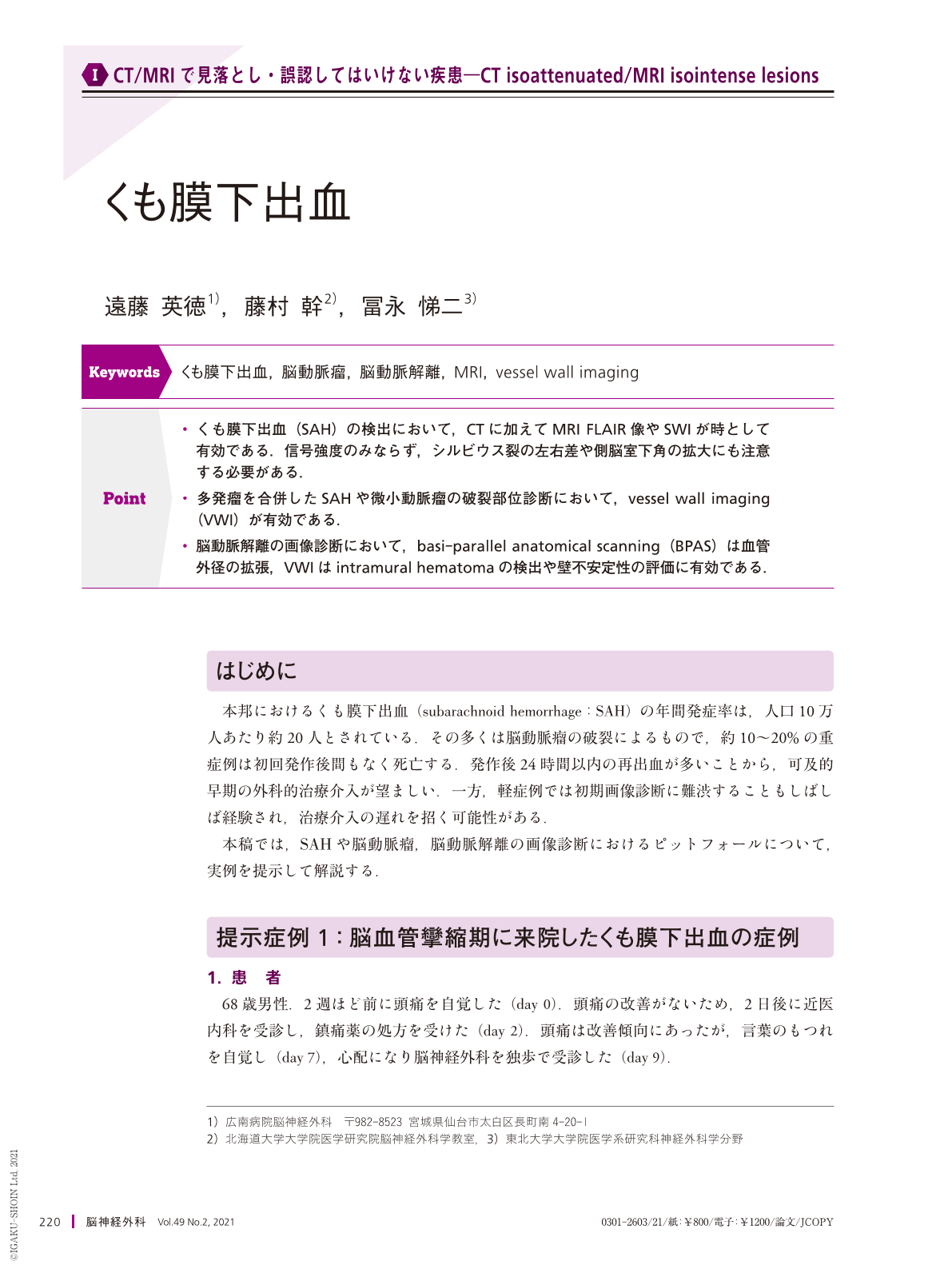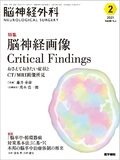Japanese
English
- 有料閲覧
- Abstract 文献概要
- 1ページ目 Look Inside
- 参考文献 Reference
Point
・くも膜下出血(SAH)の検出において,CTに加えてMRI FLAIR像やSWIが時として有効である.信号強度のみならず,シルビウス裂の左右差や側脳室下角の拡大にも注意する必要がある.
・多発瘤を合併したSAHや微小動脈瘤の破裂部位診断において,vessel wall imaging(VWI)が有効である.
・脳動脈解離の画像診断において,basi-parallel anatomical scanning(BPAS)は血管外径の拡張,VWIはintramural hematomaの検出や壁不安定性の評価に有効である.
Intracranial aneurysms or arterial dissections are major causes of subarachnoid hemorrhage(SAH). Early surgical or endovascular repair of the bleeding source is crucial because rebleeding mostly occurs within a few days after the initial attack. Radiological examination is an initial step for the appropriate diagnosis of ruptured intracranial aneurysms and arterial dissections. However, misdiagnosis may occur, especially in patients with minor bleeding or multiple aneurysms. In addition to computed tomography, magnetic resonance imaging, including FLAIR and SWI, and T2*WI are useful for detecting minor SAH. Vessel-wall imaging has recently been applied to diagnosing the site of rupture in patients with multiple cerebral aneurysms or microaneurysms, but not to assessing the instability of unruptured cerebral aneurysms or intracranial arterial dissections. In this article, we discuss the current radiological modalities and their usefulness for diagnosing SAH.

Copyright © 2021, Igaku-Shoin Ltd. All rights reserved.


